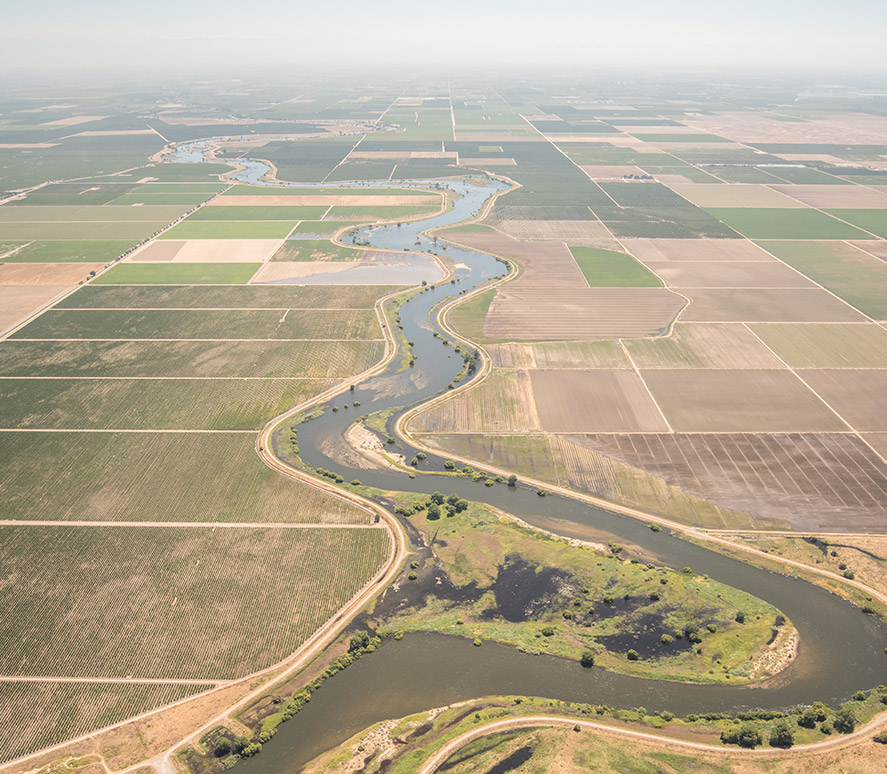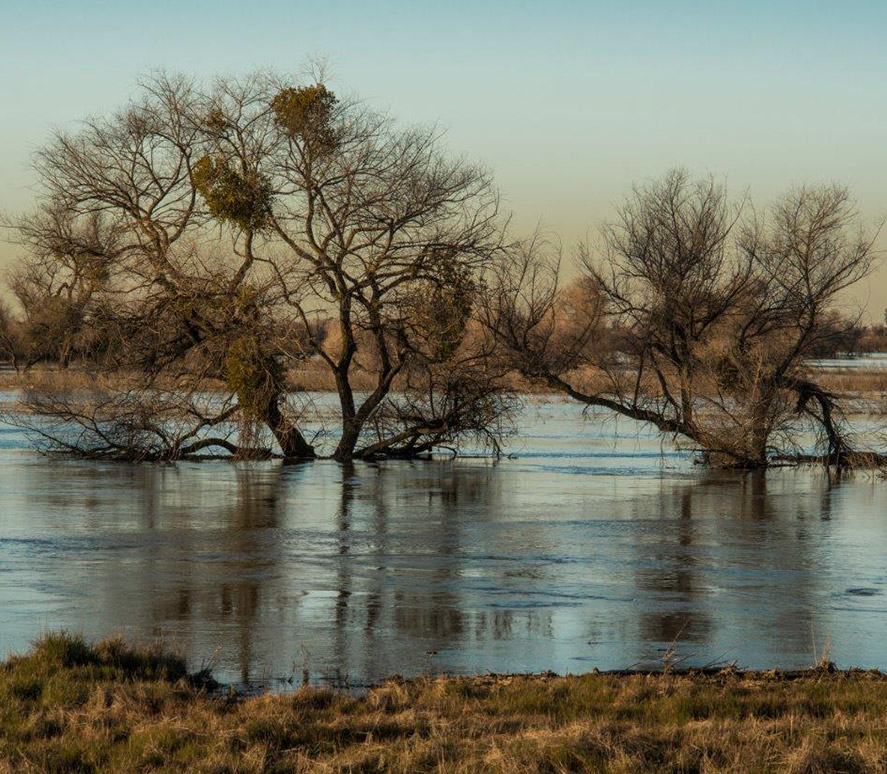A Multi-Benefit Approach to Flood Protection in California
Protecting People, Restoring Rivers
Multi-Benefit Framework
Levees protect ag fields on San Joaquin River.
Credit: Daniel Nylen
Designated floodways recharge groundwater and keep developed areas dry.
Credit: Daniel Nylen
A Win-Win for Public Safety, the Economy, and our Air, Land and Water
Central Valley flood control currently relies mostly on levees located immediately adjacent to rivers, which concentrate and exacerbate floodwater pressure.
Levees are notoriously prone to failure and deny fish and wildlife access to crucial floodplain rearing and feeding habitat.
The 2008 Central Valley Flood Protection Act sets standards to limit urban development behind levees, increase public safety and promote multiple benefits.
Working with Nature to Protect Communities
Setting back levees in strategic places and creating designated overflow areas, known as flood bypasses, reduces flood risk by giving rivers room to spread out and slow down when waters run high and levees are at risk of being breached. Floodways and bypasses can lower river levels for many miles, protecting people and property in more populated areas.
Climate models predict more rain and less snow in California’s high mountain ranges during winter months, increasing the risk of extreme flooding in the decades to come.
Read More
A Win-Win for Public Safety, the Economy, and our Air, Land and Water
Central Valley flood control currently relies mostly on levees located immediately adjacent to rivers, which concentrate and exacerbate floodwater pressure.
Levees are notoriously prone to failure and deny fish and wildlife access to crucial floodplain rearing and feeding habitat.
The 2008 Central Valley Flood Protection Act sets standards to limit urban development behind levees, increase public safety and promote multiple benefits.
Working with Nature to Protect Communities
Setting back levees in strategic places and creating designated overflow areas, known as flood bypasses, reduces flood risk by giving rivers room to spread out and slow down when waters run high and levees are at risk of being breached. Floodways and bypasses can lower river levels for many miles, protecting people and property in more populated areas.
Climate models predict more rain and less snow in California’s high mountain ranges during winter months, increasing the risk of extreme flooding in the decades to come.


